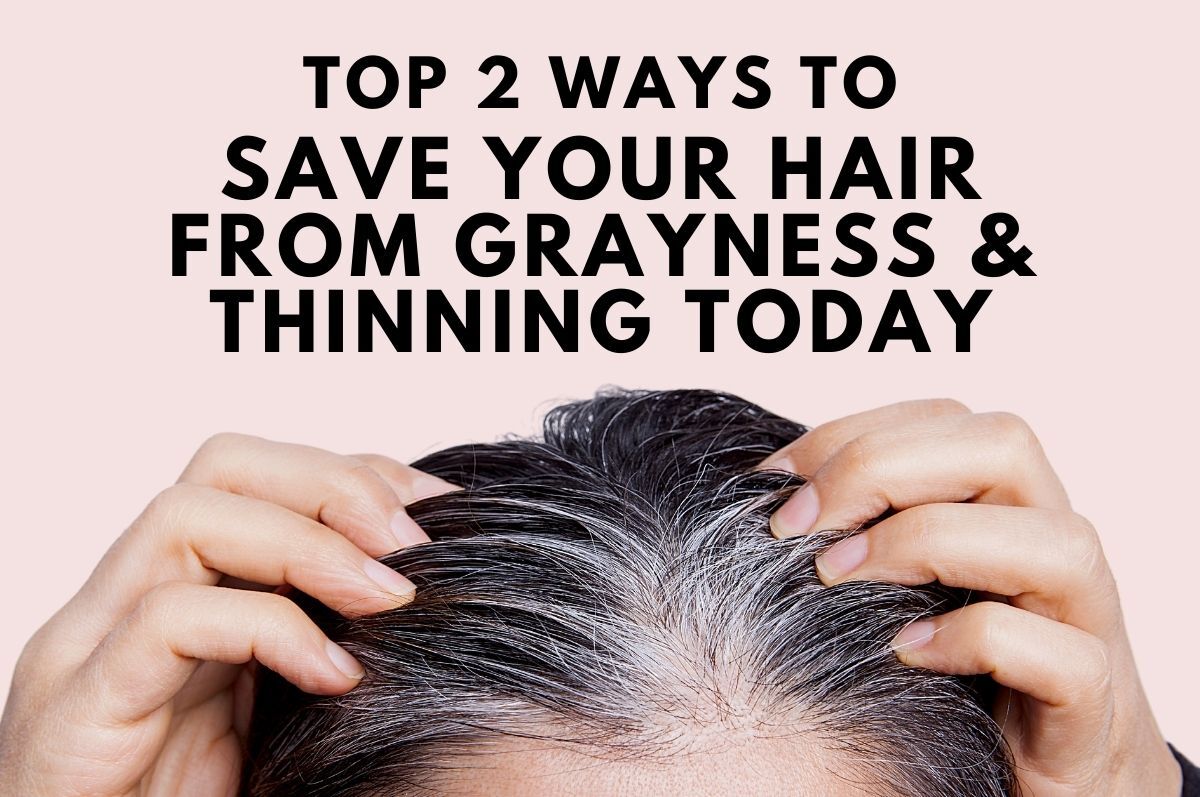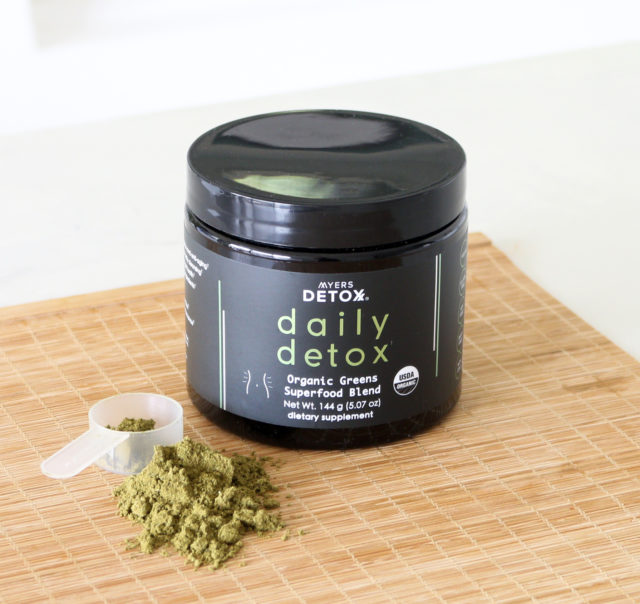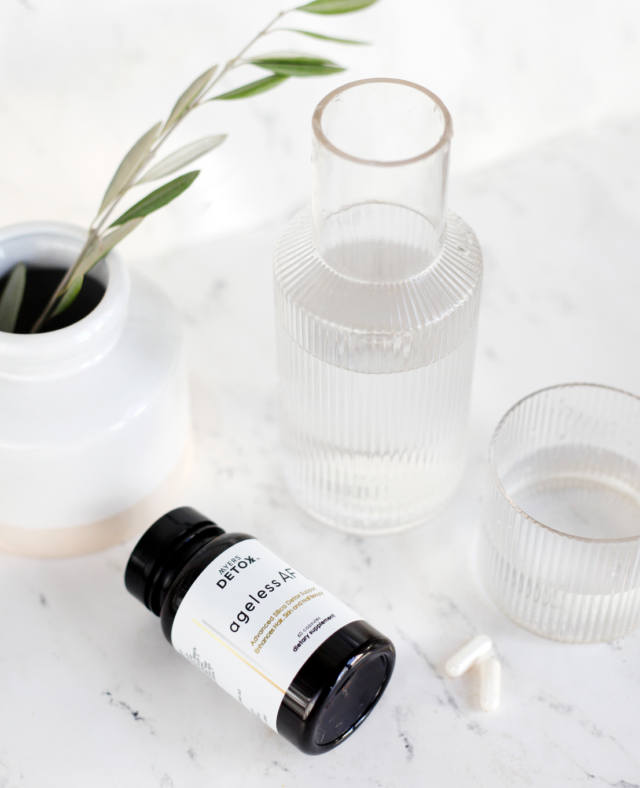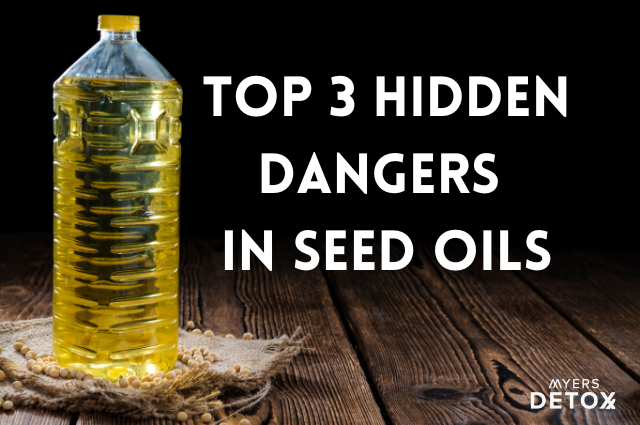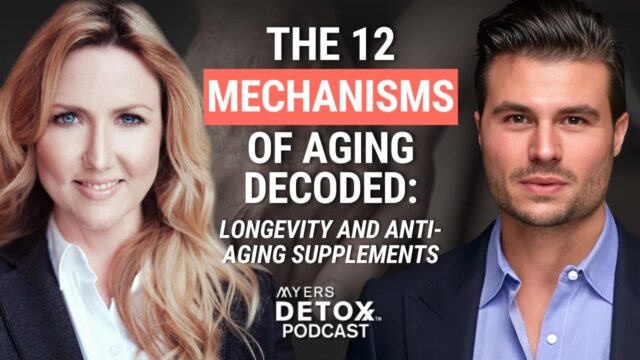Hair thinning and graying happen naturally to many of us as we age, but chalking your hair woes up to age alone is a mistake. In fact, there are a multitude of issues that can factor into hair loss and changes in color, and environmental toxins are chief among them.
As your body tries to deal with the onslaught of toxins we face today, your hair becomes a repository for many of these unwanted compounds. Unfortunately, their activity in the hair shaft is not inert. In other words, just as these toxins can damage your organs, they can also wreak havoc on your hair.
In this article, we’re going to look at one of the most toxic insults to hair health; heavy metals.
You’ll learn:
Exactly how heavy metals can instigate hair loss
- Which metals are the most toxic to your hair, and how to avoid them
- How metals lead to hair graying and loss of luster
- Four hair-healthy nutrients that you must have daily if you want to improve and maintain healthy hair
- What you can do to combat the harmful effects of these toxic compounds
Heavy Metals and Hair Thinning
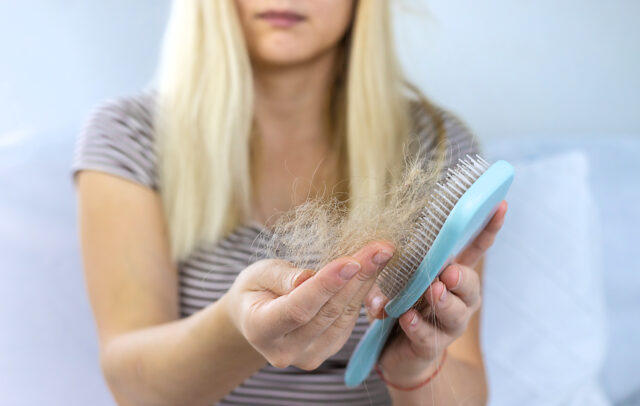
At this point, heavy metals can be found almost everywhere in our environment. Drinking water, the food supply (via soil and pesticides), in the air, our personal care products, our clothing, our furniture, and the list goes on.
While some of these metals are naturally occurring, the majority of heavy metals that end up in your body come from pollution due to manufacturing, agriculture, and other industrial activity.
Of the heavy metals that have been researched for their impact on hair growth and thinning, it appears that mercury and thallium are the two most concerning. Mercury exposure can come in many forms, but most commonly through food consumption due to the presence of mercury in our seafood supply. Dental amalgams, old jewelry, thermometers, and thermostats are some other sources of mercury to be aware of[1].
Meanwhile, thallium exposure most commonly comes from ingestion due to the presence of this heavy metal in our soil. Coal-burning power plants are a major source of thallium, and as this metal moves through our airways, it can make its way into our soil and ultimately your food[2].
How exactly do these heavy metals damage your hair?
Studies show that both of these metals can cause hair loss by disrupting the formation of the hair shaft. Specifically, thallium and mercury bind to hair keratins, an essential structural protein that helps with hair formation. When kreatins are damaged or destroyed by heavy metals, it results in weak, brittle hair that is more prone to break and fall[3][4].
In addition to these two major culprits, research also shows a connection between cadmium, lead, and copper exposure and telogen effluvium, a type of hair loss instigated by intense stress or changes to the body. The impact of these metals on hair thinning may be due to the same keratin-binding activity as mercury and thallium or possibly due to the inflammatory and oxidative nature of these chemicals[5][6]. You can learn more about heavy metals and hair loss here.
On the flip side, research shows that minerals such as selenium, iron, and zinc, can play an important role in maintaining the integrity of your hair and potentially preventing hair loss[7]. Unfortunately, heavy metals can interfere with the absorption and metabolism of these crucial nutrients – which adds injury to insult when it comes to hair loss[8].
But don’t worry – we’ll get into how you can reduce metal exposure while enhancing your hair nutrient status in just a bit.
Heavy Metals and Hair Graying
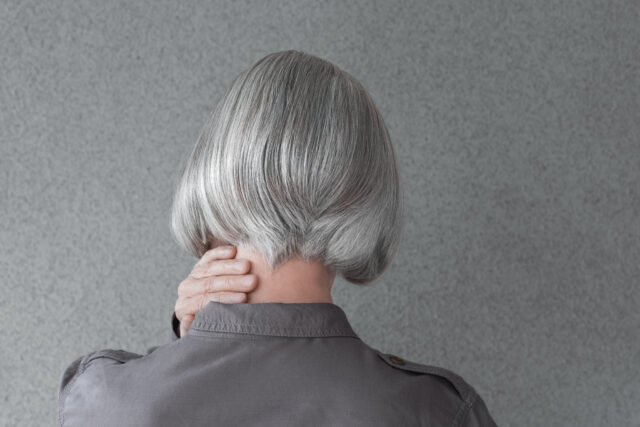
If you’ve noticed more gray hairs lately, take a breath before you despair that your age is catching up to you. It could very well be heavy metals playing a role, as we now know that metals can impact hair color in a couple of ways.
First, mercury is well-known to interact with the naturally occurring pigment in your hair and skin called melanin. Melanin comes in different shades, providing either a darker pigment, a lighter pigment, or a red pigment[9].
In ancient times, mercury was used as a skin-lightening treatment due to this metal’s impact on melanin production. By inhibiting the enzyme responsible for melanin synthesis, tyrosinase, mercury reduces the pigmentation in the skin, resulting in a lighter skin color.
While today we avoid intentionally adding mercury to our personal care products when this metal accumulates in your hair, it has the same impact as it does on your skin – it strips your hair of its color, leaving behind gray hairs[10].
The second way metals can impact hair color is once again by inhibiting the absorption of trace minerals. Among their many vital roles in your body, trace minerals play a role in hair coloration. Specifically, studies show that low iron levels can result in premature graying, as well as low levels of calcium. When heavy metals interfere with their activity, your hair ends up looking duller, and those little gray hairs start showing up in greater frequency[11][12][13].
How To Protect Your Hair From Toxic Insults
If you’re looking for ways to reclaim your hair health, there are two crucial steps you need to take:
- Reduce heavy metal exposure
- Enhance your hairs nutrient profile
#1 Reduce Heavy Metal Exposure
Avoiding heavy metals would be the most obvious way to protect your hair against their damage. Unfortunately, avoiding metals is much more challenging than it sounds – and in fact, at this point, it’s downright impossible.
While you can certainly take care to reduce your heavy metal exposure, if you want to mitigate the effects of heavy metals in your body, you need to ensure that you’re detoxing them regularly. That’s why I always recommend that my clients take a daily detox supplement, regardless of their goals.
I formulated Daily Detox to meet the needs of my clients while making it very easy to reduce toxic metal exposure every day. This formula is packed with research-backed ingredients that help to liberate toxins from your cells and usher them out of your body.
I personally don’t go a day without taking my Daily Detox; it gives me the peace of mind that I need to feel like I’m combating the unavoidable toxin exposure that’s just part of daily life.
#2 Enhance Your Hair’s Nutrient Profile
Reducing your toxic exposure can help you to get ahead of or mitigate some hair damage, but if you really want to up the ante and give your hair the love it needs, it’s all about getting the proper nutrients.
When your hair is healthy and strong, it’s less prone to breakage, graying, and thinning, which means that even when you do come across those unavoidable toxins, your hair will have the integrity it requires to stay strong and healthy.
The top nutrients known to support hair health include biotin, hyaluronic acid, selenium, and silica.
Biotin is involved in synthesizing proteins and enzymes vital for healthy hair and nails, protecting you against weak, brittle hair shafts. This nutrient is also a superstar for scalp health, helping to fight inflammation and maintaining the oils in your scalp for a healthy balance[14][15].
Hyaluronic acid is vital for maintaining the hydration in your hair and scalp. Dry hair is more prone to breakage, and a dry scalp makes for unfavorable growing conditions. Some research even suggests that hyaluronic acid may support the regrowth of hair by stimulating the reconstruction of dead or damaged hair follicles[16].
Selenium is a mineral that protects your scalp from sun damage while also playing a role in a myriad of enzymes and proteins involved in maintaining healthy hair. In fact, selenium is so crucial to hair health that common signs of deficiency include hair thinning and graying[11][15].
Furthermore, research shows that selenium may counteract the toxicity of heavy metals such as mercury and thallium – the two heavy hitters for hair damage[17].
And finally, silica is a crucial mineral for hair health – particularly hair strength. By promoting protein accumulation around your hair shaft, silica enhances the integrity of your hair and, therefore, can help safeguard against hair breakage and hair loss[18].
Taking even one of the nutrients could go a long way in creating healthier hair, but when you have all four together, you can truly enhance your hair health from all angles.
With that in mind, I put together Ageless AF, which contains all four nutrients, biotin, hyaluronic acid, selenium, and silica, for a simple way to enhance hair health from the inside out. What I love about this formulation is that it not only addresses hair health issues at the root (pun intended), but it also directly addresses heavy metals. This is the inside-out approach you need if you want to see more than minimal improvements to your hair.
And as a bonus, Ageless AF also addresses other signs of aging, like sagging skin or lack of luster. It’s truly my all-in-one fountain of youth in a bottle.
Takeaway
It’s never a good feeling when you look in the mirror and notice that your hair is getting thinner or more grays are popping up. But understanding why these things are happening can put the power back into your hands. Even if you have a family history of thinning hair or hair graying, that doesn’t mean it’s your destiny – there is plenty you can do.
Heavy metals are an incredibly common culprit of hair issues like these, and even if heavy metals aren’t at play, enhancing the nutrient value of your hair can help you to stave off future issues and address anything that’s currently bothering you.
And ultimately, your hair is just another extension of your body. Therefore, when you care for your hair with proper nutrition, you’re actually caring for your entire body.
Want to get your hair back on track quickly? Grab a bottle of Ageless AF and start feeling some peace of mind.


